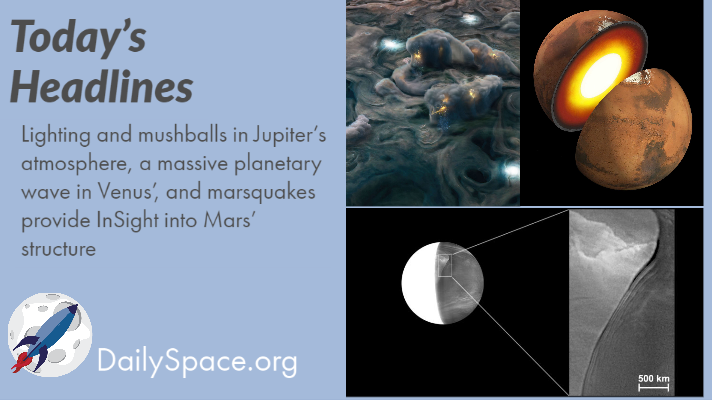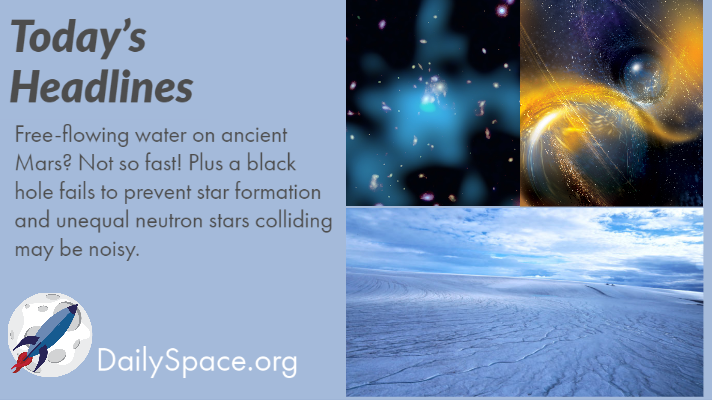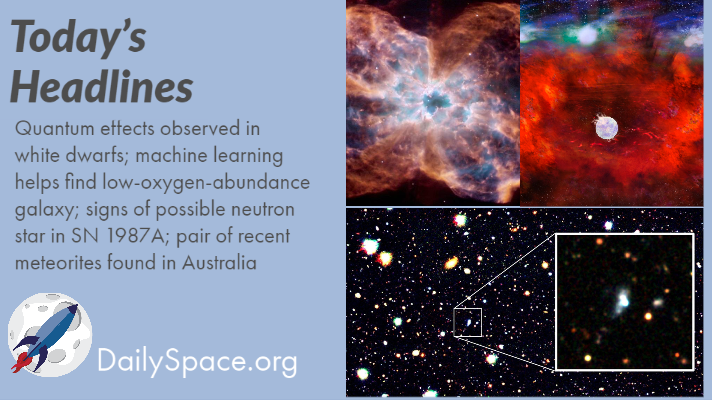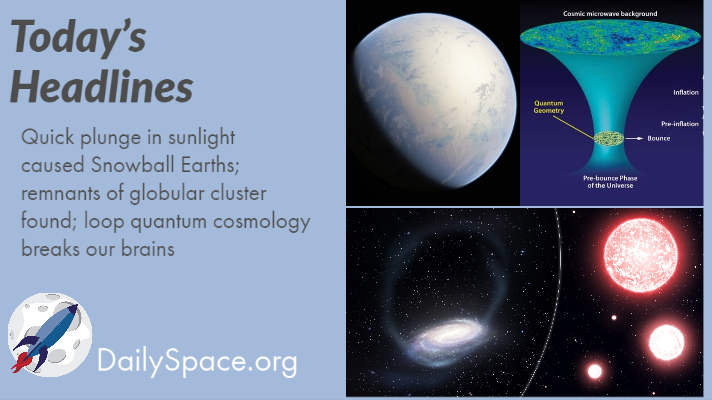
Aug 6, 2020 | Daily Space, Jupiter, Mars, Venus
Join us today for a trio of solar system stories! First, shallow lightning and mushballs in Jupiter’s atmosphere help find “missing” ammonia. Next, a massive planetary wave in Venus’ atmosphere goes back at least 35 years. Finally, InSight’s seismograph provides the first direct measurement of subsurface boundaries.

Aug 5, 2020 | Crewed Space, Daily Space, Mars, Mars 2020, Rockets, ROSCOSMOS, SpaceX
Join us for this week’s Rocket Roundup with host Annie Wilson as we look back at the launches that did and didn’t happen, including the Mars Perseverance launch, a Roscosmos launch, and the splashdown of the SpaceX Demo-2 capsule. Plus! A surprise Starship SN5 hop.

Aug 4, 2020 | Cosmology, Daily Space, Galaxies, Mars, Neutron Stars / Pulsars, Star Forming Region
Join us today as we talk about newly released research that suggests the waters on ancient Mars were subglacial and not free-flowing. Also, a black hole goes dormant and star formation goes wild. Meanwhile, computer models show that unequal neutron stars colliding may cause a big “bang” that can be detected on Earth.

Aug 3, 2020 | Daily Space, Galaxies, Neutron Stars / Pulsars, Our Solar System, Quantum, Stars, Supernovae Remnants, White Dwarfs
Join us today as we look at how quantum mechanics and Einstein’s theory of general relativity work together in white dwarfs. Machine learning is used to find a galaxy with an extremely low abundance of oxygen. Scientists find signs of a neutron star in supernova 1987A. And researchers managed to locate two recently arrived meteorites in Australia with the help of fireball detection cameras.

Jul 30, 2020 | Cosmology, Daily Space, Earth, Globular Cluster
Join us today as we go back in time and examine what caused Earth to become a snowball… more than once. We also take a look at a dismembered globular cluster found at the edge of the Milky Way. And finally, Dr. Pamela gets to explain loop quantum cosmology. Wish her luck!

Jul 29, 2020 | Daily Space, Mars, Rockets, ROSCOSMOS, Rovers, Space China
Join us for this week’s Rocket Roundup with host Annie Wilson as we look back at the launches that did and didn’t happen, including the second mission to Mars of the launch window, this one from China. Plus a Roscosmos resupply mission to the ISS and a Chinese rocket full of satellites.








 We record most shows live, on Twitch. Follow us today to get alerts when we go live.
We record most shows live, on Twitch. Follow us today to get alerts when we go live.